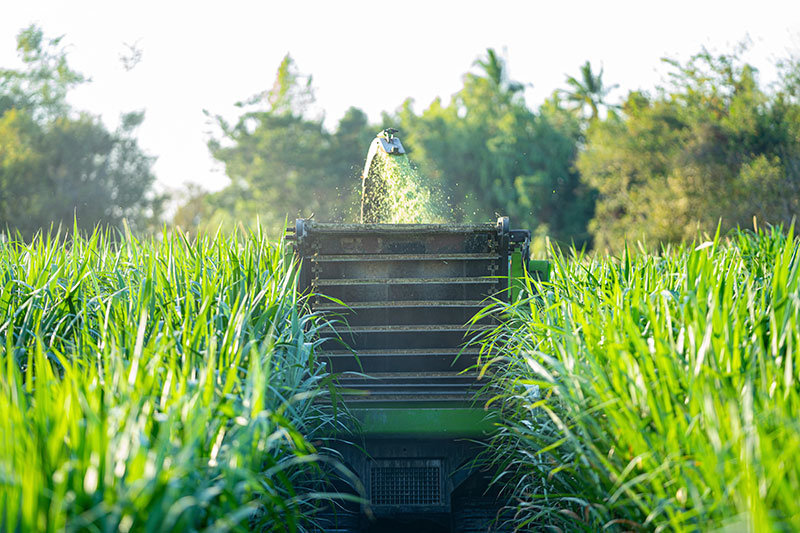The use of lignocellulosic materials like forest leftovers, agricultural waste and energy grasses, among others, shows great potential for generating bioenergy. These resources are widely available worldwide and also address concerns about food shortages that were associated with first-generation biofuels produced from edible materials.
Napier grass, also known as elephant grass, is a productive and versatile forage grass native to Africa and southeast Asia. Due to its high yield, it is widely used as feed for livestock and in bioenergy applications.
While it may be a relatively new energy crop in India, Thai farmers have been cultivating it for over 30 years, with more than 130 varieties. This fast-growing perennial grass can reach a height of 10-15 feet and can be harvested 5-6 times annually.
The first harvest occurs four months after planting, followed by subsequent harvests every two months for up to seven years. Napier grass is categorised as lignocellulosic biomass, contains 30.40% lignin, 36.34% cellulose, and 34.12% hemicellulose.
The best pulping conditions were 9.00% CaO for a period of 2.73 h, which resulted in 74.99% delignification and 66.58% cellulose. The best conditions for the bleaching process were pH 12 and hydrogen peroxide at concentration of 4.2% for 6h, at a temperature of 40 °C, which gave 90.98% delignification and 99.21% cellulose.
With an energy output-to-input ratio of approximately 25:1, it emerges as one of the most promising energy crops for the creation of cost-effective and efficient bioenergy systems.
The ideal conditions for the growth of elephant grass are: temperatures between 25 and 40°C, water supply equal to 1,500 millimeters/year, loose and moist but well-drained soils.
In India, the reported annual production yield of Napier grass ranges from 400-500 tonnes per hectar yearly, which is significantly higher compared to other energy grasses like miscanthus and switchgrass.
However, there are specific varieties that have shown even higher yields. Mahendra Thakur, a microbiologist and farmer, achieved biomass productivity of 900-1000 tonnes per hectar yearly by cultivating a hybrid variety called Super Napier in Maharashtra’s Gondia district.
Due to its significant cellulose and xylan content, Napier grass holds promise as a viable source for biogas production. When its structure undergoes hydrolysis, it breaks down into monomeric sugars that can be utilised as substrates for microbial activity. It exhibits numerous favourable attributes as an energy crop, including a short growth cycle, a relatively high methane content and a high level of water use efficiency.
Additionally, Napier grass promises a high content of easily digestible organic matter, along with high yields and the ability to withstand drought conditions. These qualities make it an excellent feedstock for anaerobic digestion processes.
Furthermore, the use of Napier grass as a feedstock can help address the issue of uncertain feedstock procurement, as continuous and reliable supply to biogas plants is often reliant on external parties.
To forge ahead with the advancement of a bioenergy system centered on Napier grass, it is imperative to guarantee its sustainability by effectively tackling the conundrum of food versus fuel. This entails implementing careful land-use strategies, the advocacy of high-yield agricultural methodologies and the deliberate prioritisation of marginal or degraded lands for the cultivation of Napier grass, thus mitigating the encroachment upon arable land traditionally dedicated to food production.
A further advantage, to protect biodiversity: the seeds produced by the second generation of the hybrids are sterile, so there is no risk of the plant becoming invasive.











